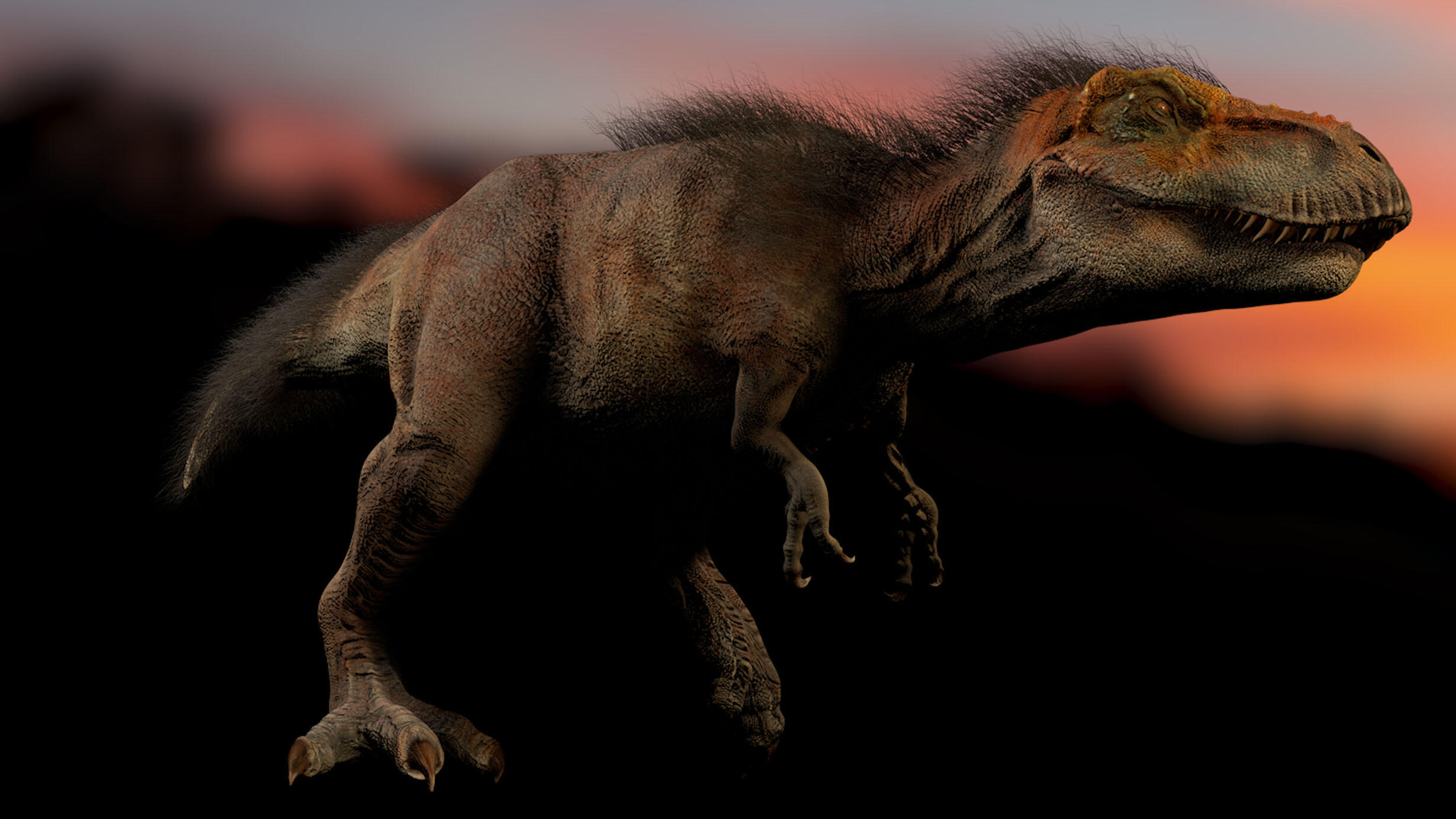 Digital animation of adult Tyrannosaurus rex.
Digital animation of adult Tyrannosaurus rex.R. Peterson/© AMNH
With 11-inch-long teeth and a fierce bite, Tyrannosaurus rex is the very model of a Mesozoic predator, as visitors can discover in the new exhibition T. rex: The Ultimate Predator. But what did the dinosaur, famous for being at the top of the food chain, actually eat?
To find out, scientists use some creative forensics—and search for evidence from a number of different angles.
The first place to look for clues about what an animal like T. rex ate is in its stomach. But lacking that, paleontologists can also analyze the contents from a later stage in the digestive process: its waste. Fossilized remains of the latter, known as coprolites, can reveal not only what an animal has eaten but how it consumed its prey.
In the case of T. rex, the big break came in 1998, in Saskatchewan, Canada. Paleontologists discovered a rare, 1.5-foot-long coprolite that only could have been produced by a very large carnivorous dinosaur like T. rex.
T. rex had to eat a lot to grow to its full adult size. Find out more about how T. rex got so big!
Analyzing the fossil, researchers found that it contained high levels of phosphorous and that 30 to 50 percent of the specimen was composed of bone fragments—some as small as grains of sand—from a young animal. The contents helped scientists confirm what this predator’s impressive anatomy had long indicated: T. rex could crush and digest large amounts of solid bone.
“Certainly, from a biomechanical perspective, that’s what you’d expect,” says Mark Norell, Macaulay Curator of Paleontology and curator of T. rex: The Ultimate Predator. “Its entire skull and entire neck are just built for massive, crushing bite force.”
Karen Chin/specimen belongs to the Royal Saskatchewan Museum (Saskatchewan, Canada)
So, to get back to the original question: what did the full-grown, apex predator, top-of-the-food-chain T. rex actually eat with its bone-crushing molars? That, as it happens, is still to be determined.
“The study of T. rex is still a very active scientific endeavor,” says Norell. “We’re currently looking at a couple of different things—and one is that we’re going to need more high-resolution CT scans of Tyrannosaurus feces, to actually see if we can figure out what kinds of animals it was eating.”
A version of this story first appeared in the Spring issue of the Member Magazine, Rotunda.